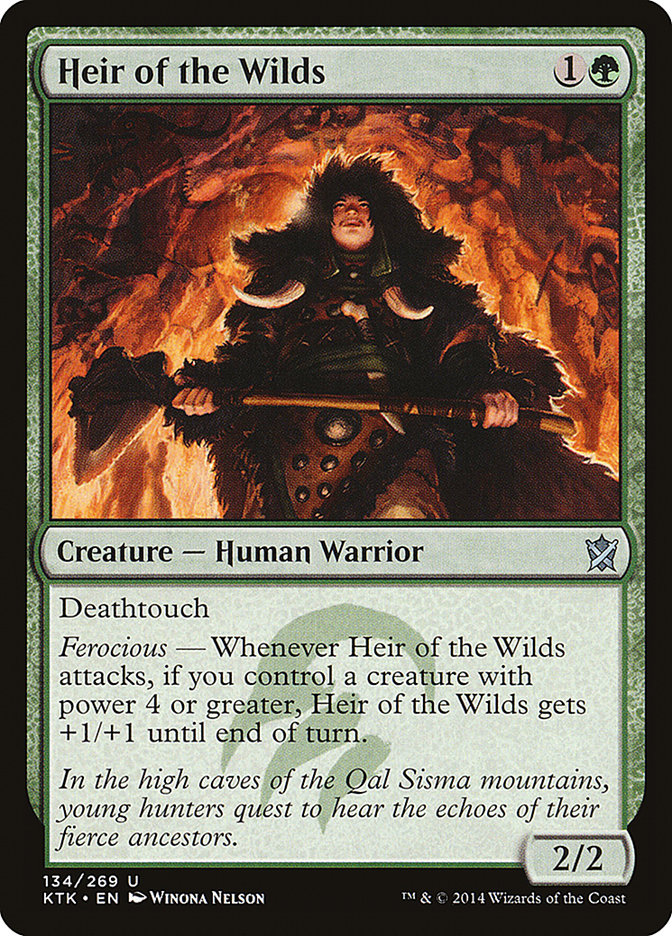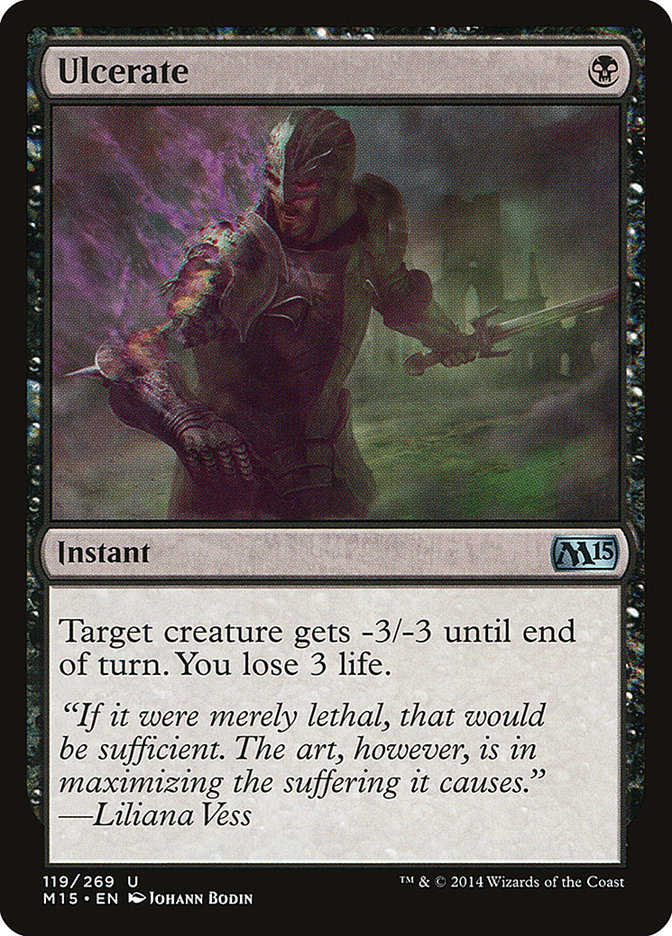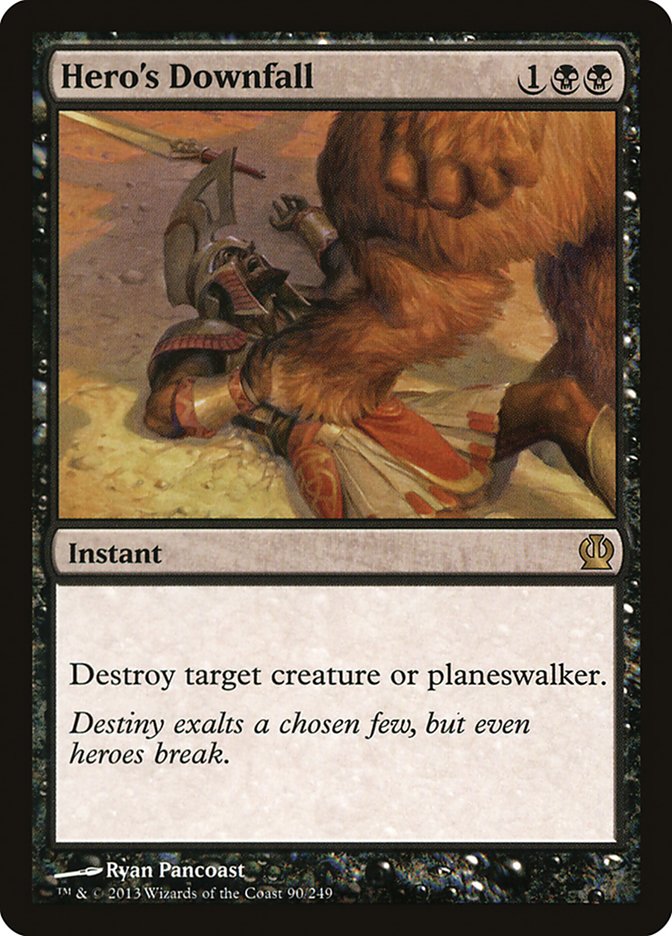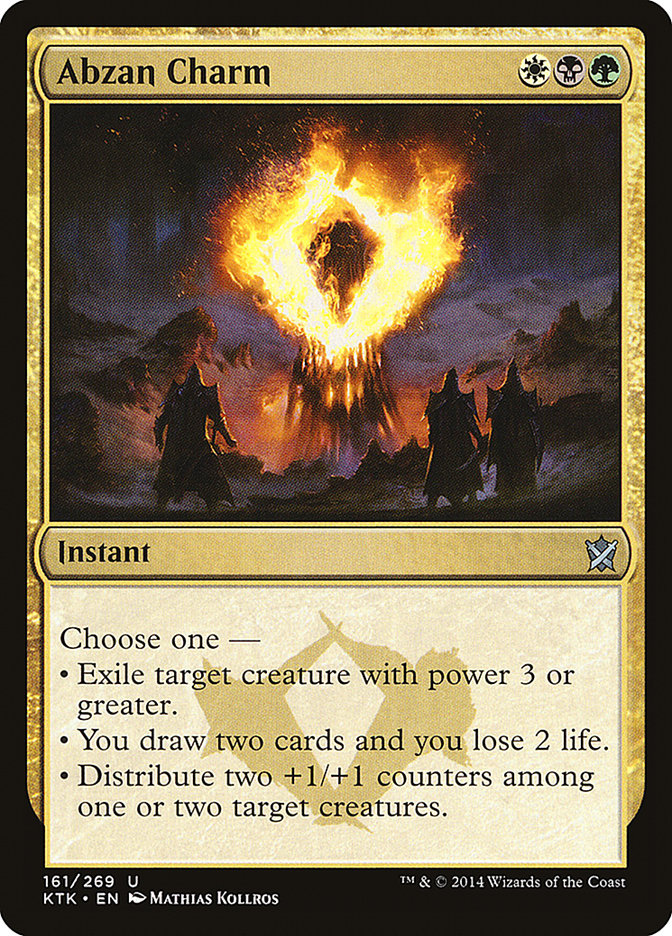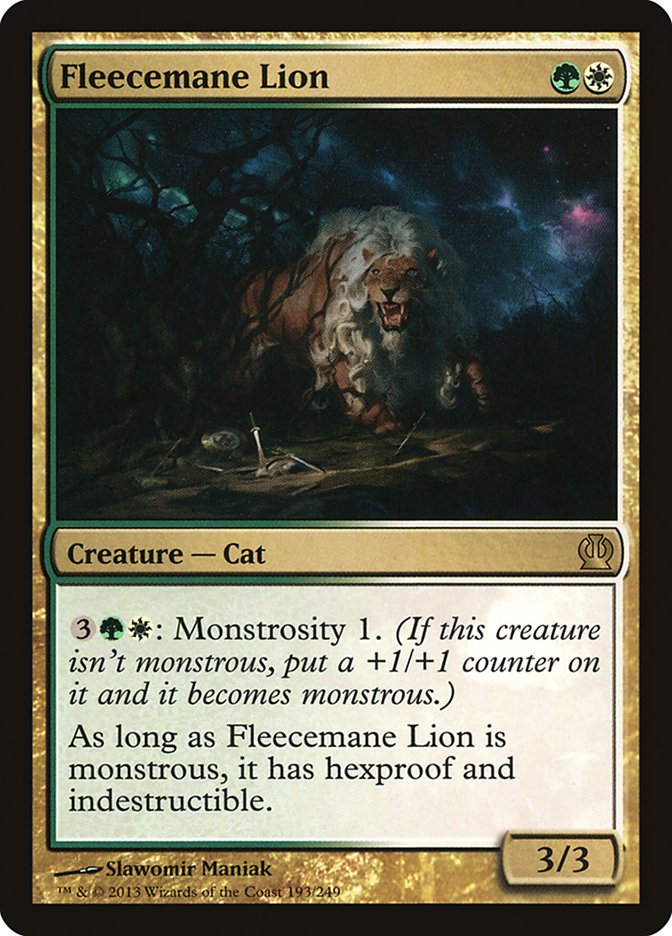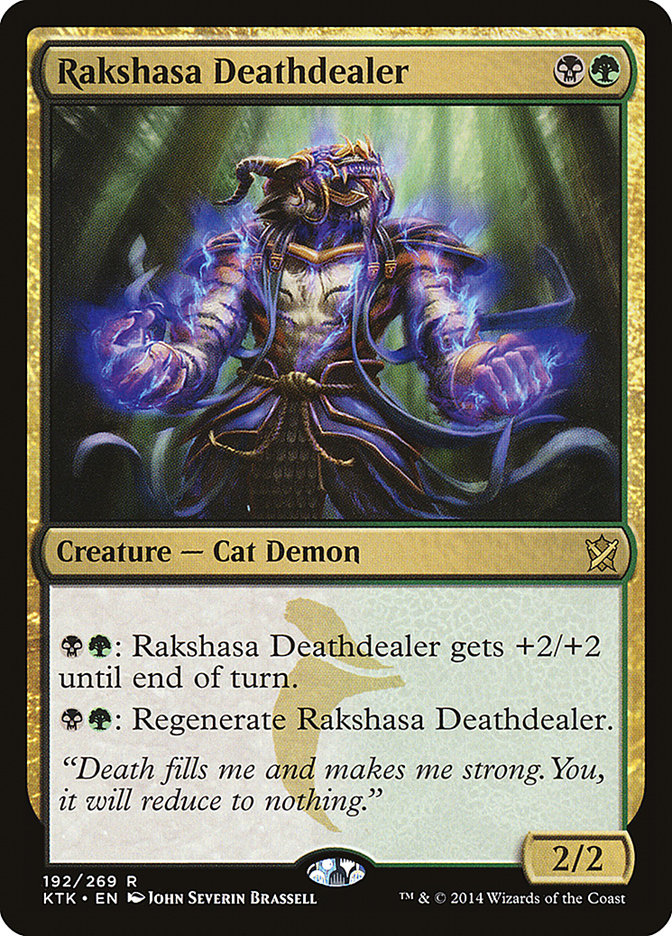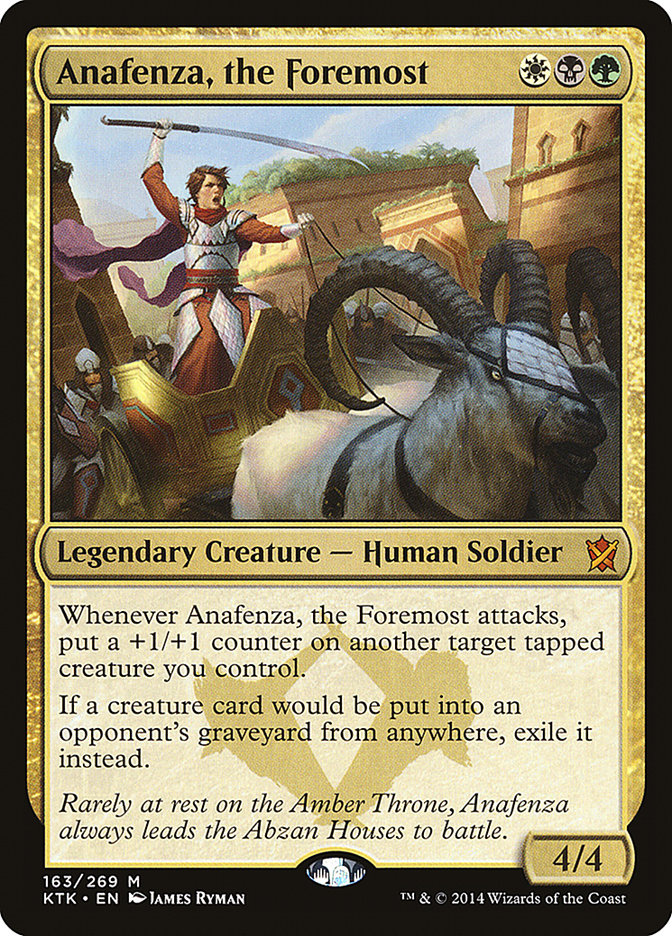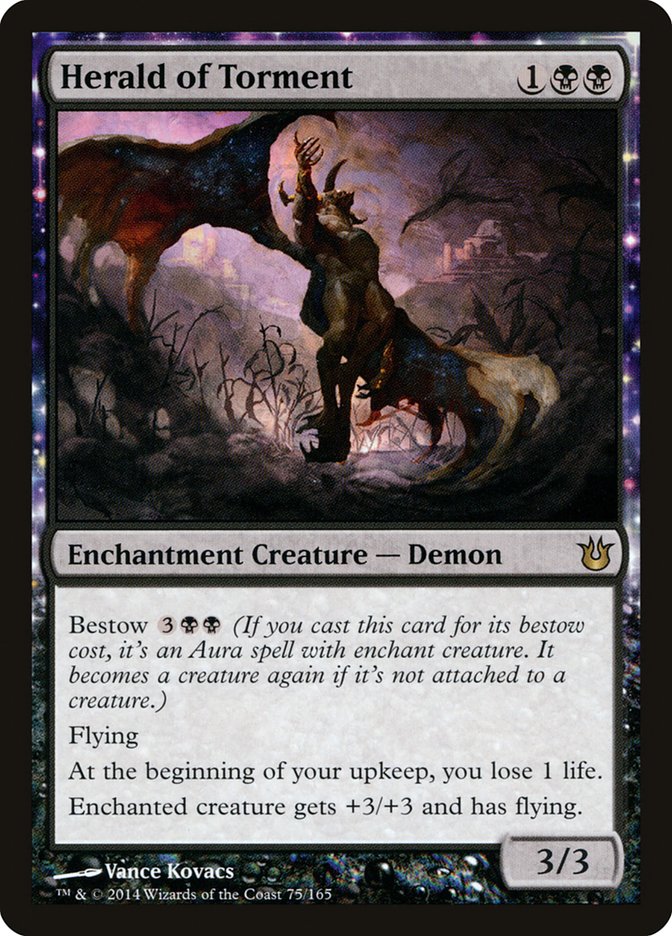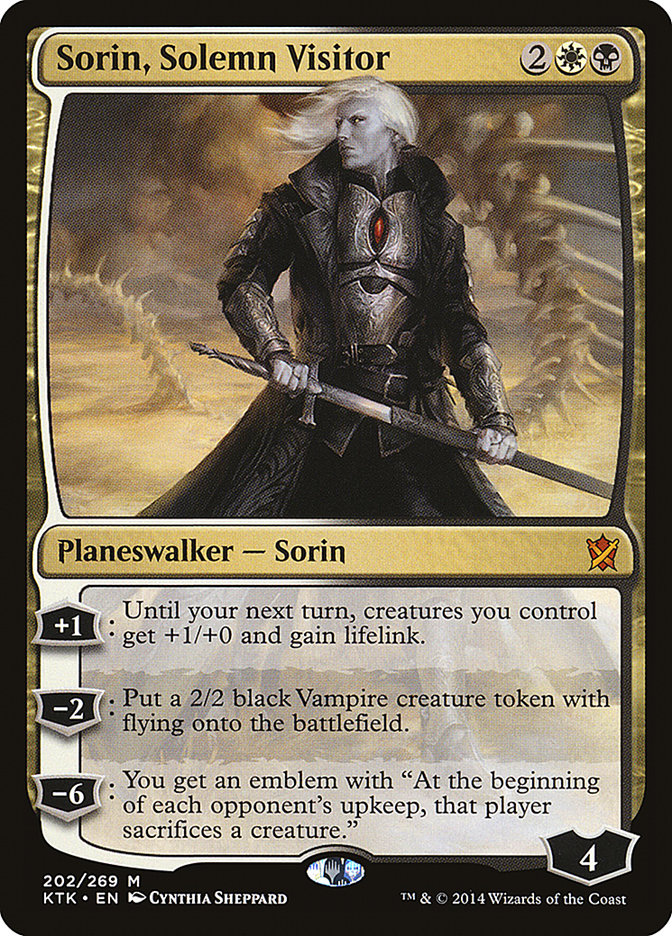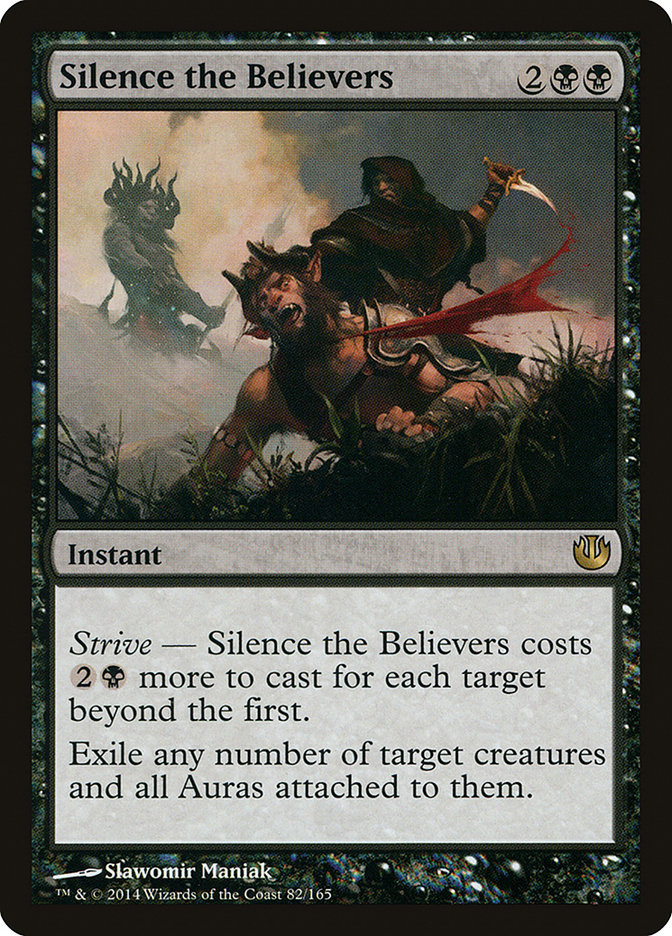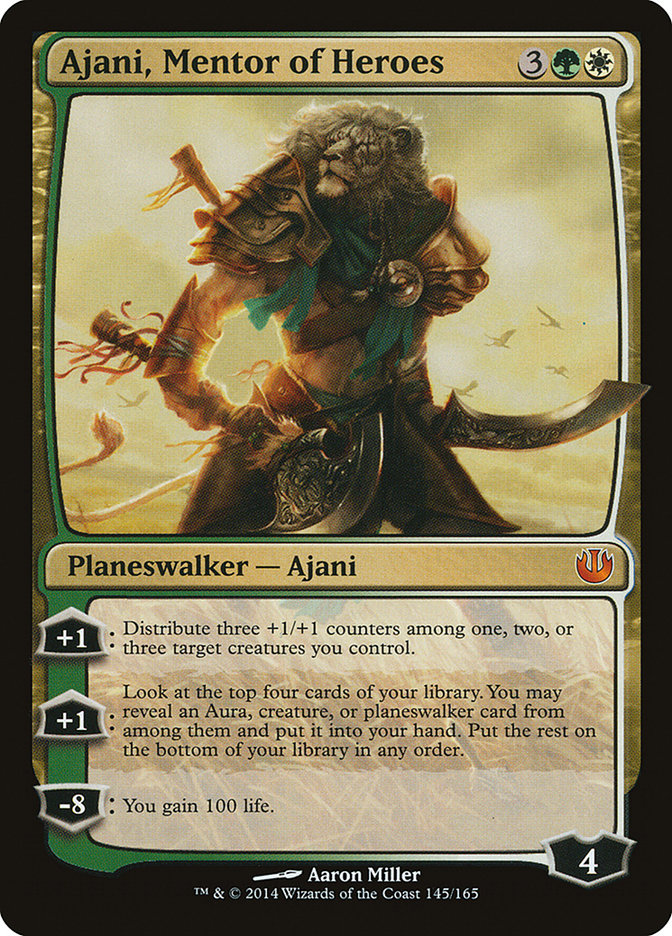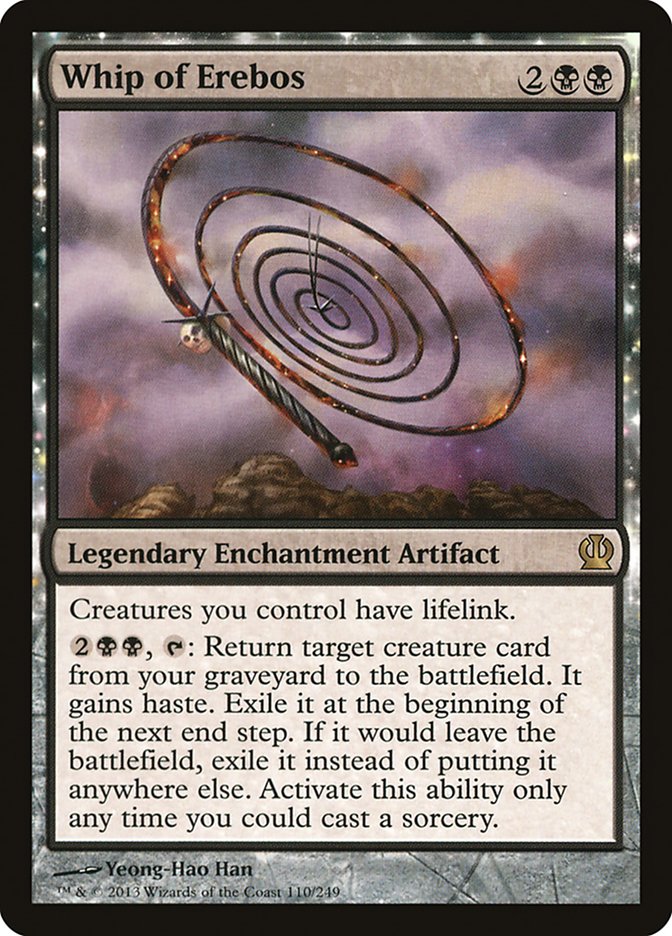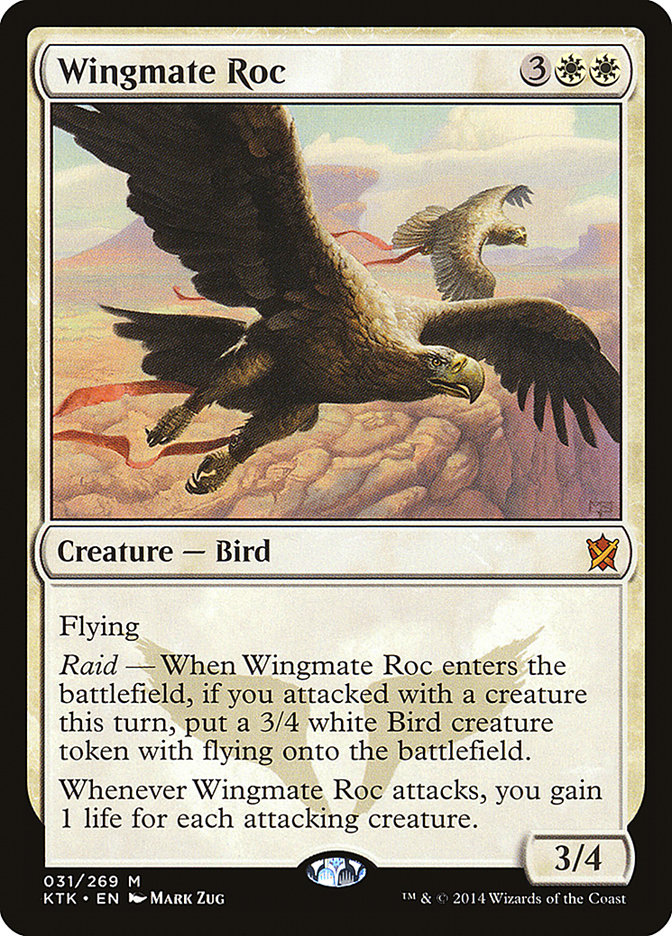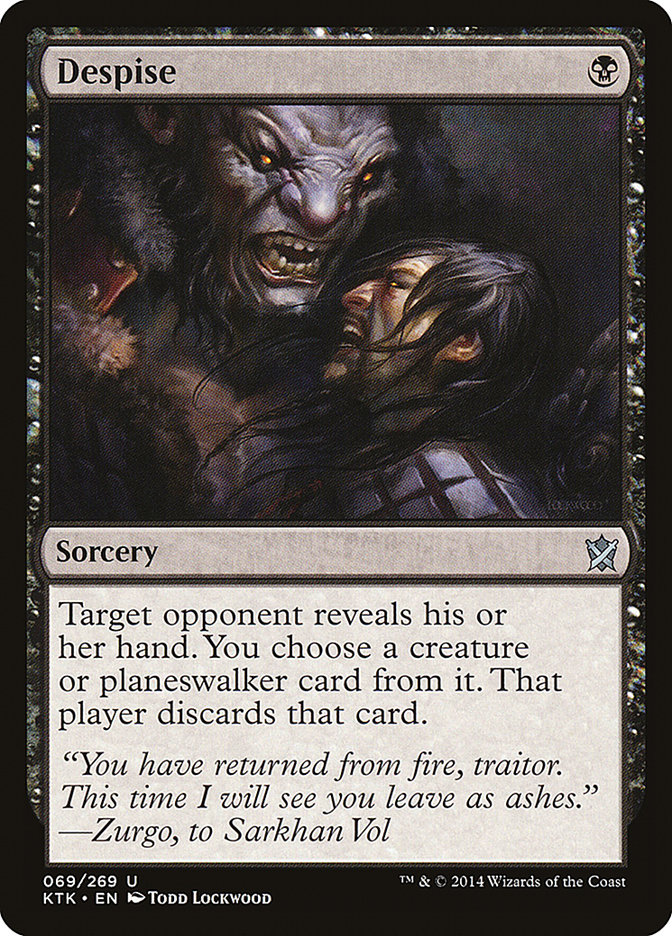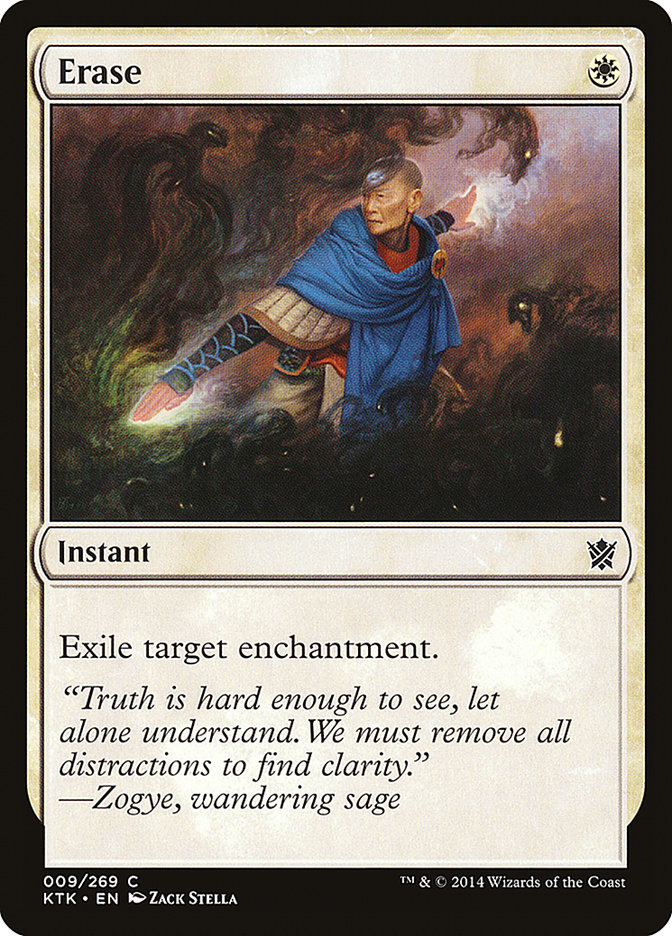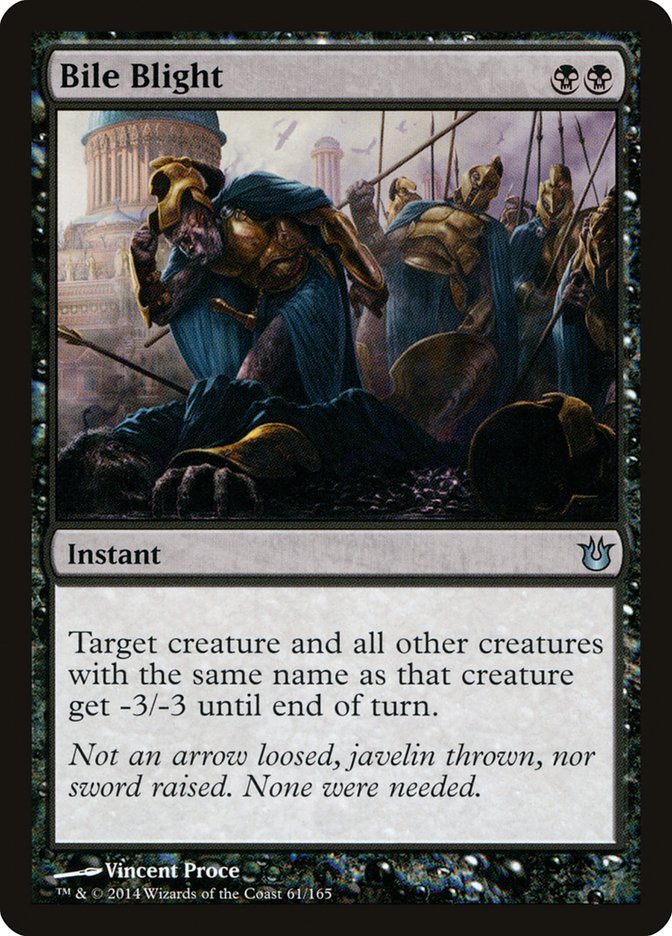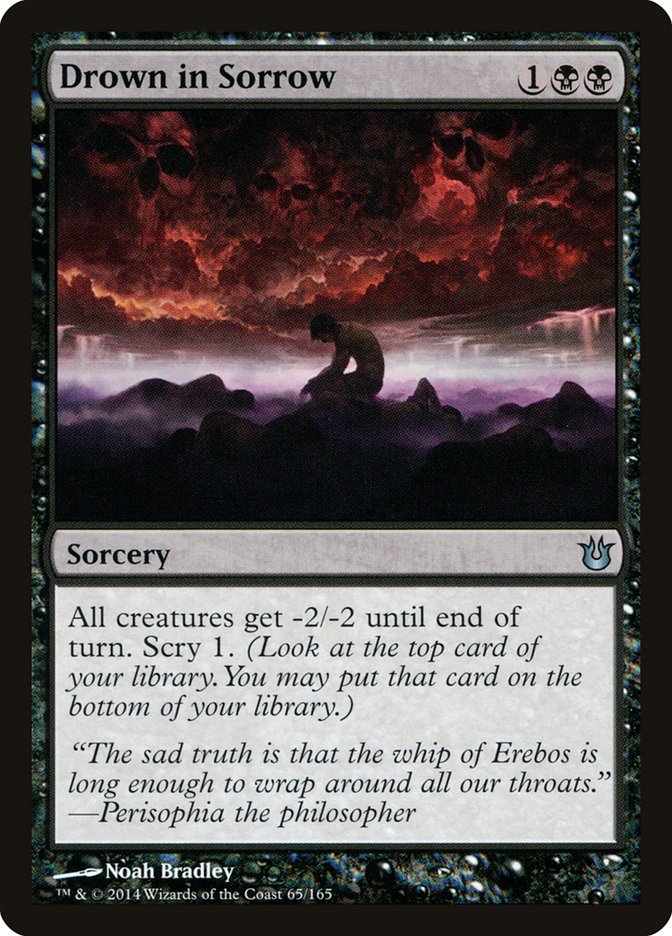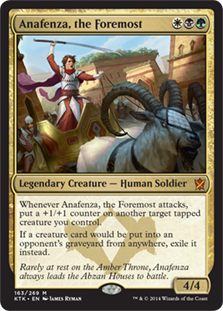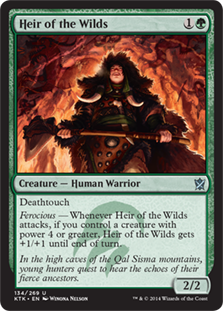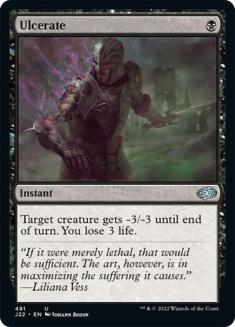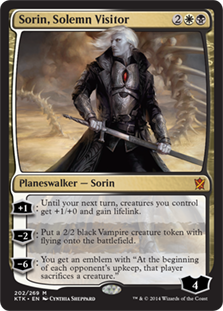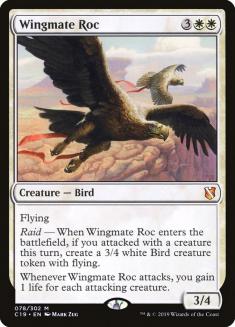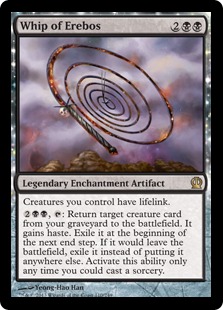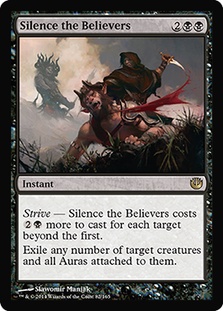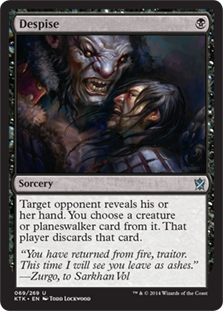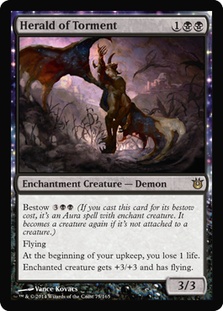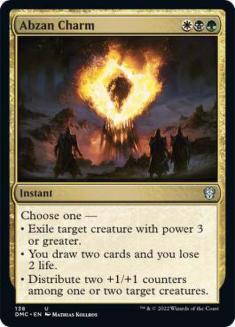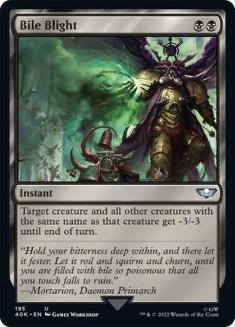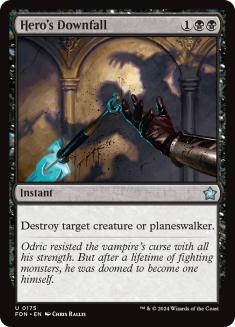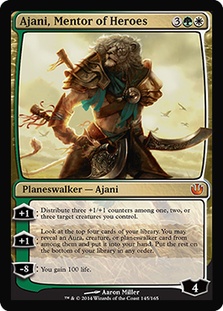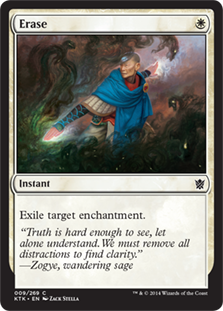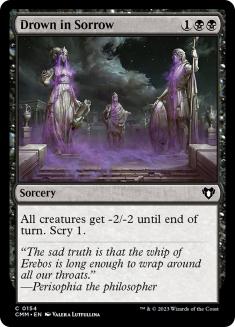Long-time player. Grizzled veteran. PTQ grinder.
These are all terms I have heard being used to describe myself at the coverage of recent events. All true and meant to be endearing terms, but they leave
something to be desired. I have played Magic for a long time, that is true, but I also took several long breaks from competitive play. Be that as it may,
my Magic career had not had many accolades worthy of note. In GP Richmond of this year, I had my first big individual finish losing in the top 4.
Shortly thereafter, I went 13-2 in GP Philly and got ninth on tiebreakers. This is the one that hit me hard. My confidence level was so high, and I just
wanted a chance to prove myself, especially in Limited. Not having a chance to draft in that Top 8 made me want it more than I ever did before and gave me
the fire. I finally felt like I got to a place in my Magic career where I could compete with the best.
Fortunately for me, I had another opportunity in GP Washington DC where I made Top 8 and eventually took home the trophy. This accomplishment finally made
me feel good about where I was at and where I was heading. An offer to join one of the best teams of players in the world, Team Face to Face Games, was the
last ingredient in having a real shot at competing at the Pro Tour level. After my second Pro Tour with Face to Face I’m proud to say I have my first Pro
Tour Top 8 finishing in fourth place at Pro Tour Khans of Tarkir.
Creatures (21)
- 4 Fleecemane Lion
- 4 Herald of Torment
- 2 Heir of the Wilds
- 3 Anafenza, the Foremost
- 4 Rakshasa Deathdealer
- 4 Siege Rhino
Planeswalkers (3)
Lands (24)
Spells (12)

The metagame we expected going into this Pro Tour was full of green midrange decks, Mardu midrange decks, Jeskai Aggro, some amount (but likely not too
much) Mono-Red and Mono-Black Aggro, and a little Jeskai Ascendancy and U/X control sprinkled on top. Because we expected a field full of Courser of
Kruphix and Sylvan Caryatid, we did not want any of our creatures to be blanked by these cards. We had a long debate about including a couple of our own
Coursers because of the power level of the card. Some of my teammates actually went through with it and played a couple of copies, but I held to my gut and
knew that it was too far off the gameplan. This is where Heir of the Wilds came in.
It doesn’t get blanked by either of those format defining creatures and curves great into an Anafenza providing another four-power creature on turn 4 when
they both attack. The cards’ power level is of the lowest in the deck, but it is simply filling a roll as the third best two-drop available for the
gameplan.
Another card that may come across as an obscure choice is Ulcerate. “How can you play Ulcerate in a deck already dealing itself so much damage?” Well the
answer is actually pretty simple. The tempo an efficient one-mana removal spell provides is often going to prevent more damage than the three it is dealing
as a cost. Killing a Mantis Rider on the draw when you’ve played Temple into Temple, or a Fleecemane Lion, a Goblin Rabblemaster, or even just a
non-Caryatid mana accelerant is invaluable. Of course, drawing this funky one-of is a lot worse in the later stages of the game, which is why you wouldn’t
want to play a full play set, but drawing one, both in testing and throughout the tournament, was almost always good.
That said, Ulcerate does have some weak matchups like the Abzan Midrange decks with few or no targets to outright kill. You can still make use of the card,
however, by winning the war of Siege Rhinos in combat, targeting your own four-power creature in response to an Elspeth activation, or even just to deal
the last points of lethal damage with a Rhino being blocked by a Courser.
As for the more straight-forward card choices:
I got asked a question in my deck tech at the Pro Tour as to why people weren’t playing this card. The simple answer is that there are a lot of midrange
decks running around, and casting Thoughtseize gets less effective the longer the game goes. The midrange decks aren’t trying to close the game early,
leaving their opponents more time to draw the piece taken with Thoughtseize. This Abzan Aggro deck has the ability to close the game out with fast starts
before an opponent can rebuild from a Thoughtseize.
The best one for one removal spell available at the moment. The versatility it provides makes it better than Murderous Cut, especially since the deck has
difficulty filling the graveyard to make Murderous Cut cheaper in the important stages of the game.
This number changed several times in testing. Every ability being so relevant made the card feel like it should be a four-of, but we decided ultimately the
existence of the Charm gave us the ability to bluff or make our opponents respect its existence. One of the more important instances of this came into play
in the top 8 where I attacked with a vampire token created by Sorin. On the next turn, after giving my token +1+0 with Sorin’s other ability, Ivan Floch
had to respect that I could have Charm and wasn’t able to block with his Prognostic Sphinx. I did not have a Charm in this instance, but I did have a
Wingmate Roc to raid giving me the extra token, creating a huge board advantage for me against his U/B Control deck.
The instant speed Sign in Blood mode makes it useful against control decks as well, where other removal spells would just be dead draws. Obviously exiling
a creature with power three or greater is where this card shines, and I did send my fair share of Ashcloud Phoenix to exile over the course of the
tournament.
Fleecemane is the obvious choice for a powerful two-drop in most Abzan decks, is a great threat to draw at almost any stage of the game, and is easily the
best target for a bestowed Herald of Torment.
Quietly the second best creature in the deck, Rakshasa don’t play. This little grizzly bear does work throughout the entirety of a game and is a very
important aspect of the way this deck was designed. We wanted all of our cards to remain powerful regardless of how deep into the game we were. No matter
what turn you cast the Deathdealer, it’s going to have the potential to take over the game with its pump ability and the resiliency granted by the
regeneration makes it one of the most powerful (maybe the most powerful) creature in the deck.
Anafenza being a legend impacted the number I was willing to play. It’s very difficult for the red decks to deal with her on the early turns of the game,
and fairly easy for other Abzan decks to blank due to the high toughness of Siege Rhino or Polukranos. That said, your best draws are curving a two-drop
into Anafenza with only one enters-the-battlefield tapped land along the way, and the explosiveness of these draws is what made me play three copies. The
added graveyard hate for potential Sultai Delve strategies and the ability to make Dig Through Time out of the Jeskai Ascendancy a little more difficult to
cast gave Anafenza a little bump in value in deck building.
This is either your best or worst card in most games. You’re going to ride Hearld to victory in some games or wish you drew almost anything else in others.
Herald is essential to the concept of this deck because breaking the ground stall is so important. This deck has no good way of dealing with or getting
over an Elspeth otherwise, so it becomes essential in the midrange mirrors. Combined with the resiliency of the early creatures in the deck, you can create
a threat that most decks are unable to answer.
Siege Rhino is the reason this deck can win. It’s a powerful threat that provides needed reach and gains back life lost from all the pain the lands and
spells deal in this deck. Siege Rhino is the reason we wanted to build this deck. The best way to take advantage of Siege Rhino is to utilize its
aggressive nature, and while it’s a great card in any deck, I think its best home is in Abzan Aggro.
This was a complex and controversial card in testing. When initially building this deck with Sam Pardee, I wanted to add this card specifically because of
how powerful our creatures were and how relevant the lifelink ability was when mitigating the damage from our painful spells and manabase. We played around
with Whip of Erebos and Ajani Steadfast as well, but Sorin was clearly out performing both of those cards. It didn’t take us long to figure out that all of
the modes on Sorin were extremely relevant.
Sorin provides the ability to race more aggressive decks or create a two-for-one by making a vampire and still having itself left behind, threatening more
vampires or the ability to go ultimate if unchecked. We noticed while testing for my Top 8 matchup against Ivan Floch that if Sorin went ultimate and my
life total was high enough (nineteen to be exact), he had no way to deal me lethal damage. One major upside to Sorin, Solemn Visitor is punching your four
powered threats through opposing five toughness creatures like Polukranos and Siege Rhino.
As for the lands, the only interesting choice is the second Urborg Tomb of Yawgmoth. If I had a choice of playing exactly one or three, I’d likely play
three as Urborg over-performed in what appears to be a shaky manabase. It provides the ability to cast a lot of sideboard cards, Hero’s Downfall, and curve
a Fleecemane Lion into a Herald of Torment with just a basic Forest and Plains in play.
Speaking of the sideboard, going into the tournament, it felt like the weakest part of the deck. We weren’t sure what to expect and wanted to make sure we
had some game against everything thrown at us. We also wanted to make sure that after game 1, we didn’t have any cards in our deck that weren’t doing
anything. Unfortunately, I found myself without enough cards to take out against Owen Turtenwald and was left with a Hero’s Downfall in my deck. This was a
small flaw, as we did not to expect to see U/B Control decks without at least some number of Ashiok, Nightmare Weaver.
For this purpose, I would certainly remove a Drown in Sorrow for another card against control decks. I think Nissa is the best threat against a U/B Control
deck with Perilous Vault, which in my opinion is the better version of the deck. Nissa, Worldwaker leaves behind 4/4 lands after Perilous Vault is
activated, giving you a board presence in which most other options would not.
This Standard format is still very young and decklists are changing rapidly, so having a set sideboarding guide isn’t as helpful as knowing where your
cards are at their best, so let’s just examine each sideboard card individually and then I’ll go over how I sideboard in the more popular matchups.
In testing we found ourselves short of good answers to Stormbreath Dragon. Many times I’d be stuck with an Abzan Charm in hand while a Dragon was eating me
alive. Silence the Believers provided us an additional way to kill Stormbreath Dragon, as well as his partner in crime Sarkhan, The Dragonspeaker. Silence
the Believers also added some value to a removal spell in a grindier creature-based matchup like other Abzan decks. In those matchups, the game often goes
a few more turns after sideboard and the strive ability becomes both more relevant and extremely powerful.
Ajani, Mentor of Heroes was incredibly powerful for me during the Pro Tour. Not only does it provide the ability to dig for more Siege Rhinos and Herald of
Torments, but it can also turn a small threat into a very large one. It is best brought in against control decks.
Whip serves a few purposes in the sideboard, but honestly it isn’t doing any of them very well. It provides some inevitability in any grindy matchup and a
life boost against burn or aggro decks, but I find the problem with Whip vs the aggro decks is that at such a high mana cost, it sometimes take a full turn
it to do anything of relevance. I think Whip is probably still good enough to be in the sideboard because of how powerful it can be in the lategame against
some decks, but it is certainly a card I’ll keep my eye on in the future to see if it earns its keep.
“The Roc’s in the building!” is often what I’d say to myself in my head after a match. Wingmate Roc was roc solid, easily the MVP of the sideboard, and is
in serious consideration to be moved to the maindeck. It performs well against any deck that doesn’t have sweepers, interacts with Elspeth, Sun’s Champion
favorably, provides a huge board presence upon arrival, and even gains a little life in its spare time. The deck is designed to have difficult to block
creatures, so triggering raid is almost never an issue. Wingmate and its token also interact great with Sorin, Solemn Visitor, generating giant swings of
life and almost always swinging the race in your favor. Be careful though–Sorin’s ability lasts through your opponents’ turn, so keep that in mind when
trying to play around a potential Elspeth, Sun’s Champion.
It’s as easy as reading the card really. Whenever your opponent has a large amount of creatures and planeswalkers in their deck, you’re going to want
Despise. This is most effective against midrange decks that focus on landing a powerful threat a turn or two ahead of schedule, and is mostly a nod to
green devotion decks where Hornet Queen is a major problem.
This card isn’t very versatile but is the cheapest way at dealing with a Jeskai Ascendancy. The Ascendancy combo was always on our mind when building a
sideboard because of how powerful and fast the deck can be. There’s some added value in having Erase because it can kill Gods, Eidolon of Blossoms, and
plays particularly well against Mono-Black Aggro decks that rely on a few enchantment creatures.
As you can see, I did not want to lose to an aggro deck last weekend. Given the metagame at the Pro Tour, this was a bit overdone, and in the future I will
be trimming some of these numbers. Bile Blight is great against Jeskai Aggro, anything hyper aggressive, and also plays a key role against Mono-Green
Devotion in killing its early mana accelerants and hornets after the Queen has her children.
Drown in Sorrow is more for swarm decks based around Goblin Rabblemaster. I’m not proud to say Drown in Sorrow is the only card at Pro Tour Khans of Tarkir
I never boarded in, but I’d still play at least two in my sideboard because of how much of a game-changer it is when it does matter.
How to Sideboard:
VS Abzan Midrange
Out:
In:
VS. Jeskai Aggro
This matchup can go a lot of ways. Jeskai Aggro has the ability to transform into a control deck, or stick to the aggressive plan with burn so proceed with
caution and note how your opponent changes their deck after game 2. In general this is how I would sideboard:
Out:
In:
I would also consider adding a Whip of Erebos over a second Abzan Charm.
VS U/B Control
Out:
In:
And if added to the sideboard as suggested, 1 Nissa, Worldwaker.
VS. Jeskai Ascendancy
Out:
In:
VS. Rabble Red
Out:
In:
VS Green Devotion
Out:
In:
So there it is! It feels good to have executed a gameplan and had a result that rewards the hard work my team put into this Pro Tour. I honestly can’t
thank them enough, but I will try. Like any long time Magic player would.
With Props and Slops.
Props:
- Heather Sigrist: My wife who was nothing but supportive and helpful through the tournament while just waiting for it to be over so we could go
explore Hawaii. Thanks Heather! - Each and every one of my teammates worked hard playing, building, and theorizing decks at a very high level. Each and every one of them stayed up
until five or six in the morning playtesting my top 8 matchups. Since this can be said to all of them let me get into specifics. - Jon Stern: All around organizer and caregiver. Thanks for putting up with a bunch of kids, myself included. Also props for beating me the most
often in house drafts. Thanks Jon! - Alexander Hayne: Props to Alex for being our self-proclaimed Constructed specialist. Always has great ideas for Constructed deckbuilding and backs
up his ideas with sound theory. Thanks Alex! - Jacob Wilson: Props to Jacob for building a few brews that tested the waters. I learned a lot from Jacob just by watching him play. Also props to
Jacob for never beating me in a Draft match ever. Without you, my confidence would be shot. Thanks Jacob! - Sam Pardee: Props to Sam for building this Abzan Aggro deck with me. Give Sam green, black, and white mana and there is no limit to what can be
achieved. Sam also beats me more often than anyone in Limited other than maybe Jon. Thanks Sam! - Josh McClain: Props to Josh for going all around the map in building different Abzan decks which eventually led us down the aggro path. If Josh
didn’t lose hundreds of games with his other Abzan decks, who knows what might have happened. Thanks Josh! - Nathan Holiday: Props to Nathan for being our resident combo expert. I was thoroughly impressed with how he and Alex both played and designed their
version of Jeskai Ascendancy. If Nathan wasn’t so good at it, I wouldn’t have felt embarrassed about how bad with it I was and may have ended up
playing it myself. Thanks Nathan! - Dave Shiels: Last but not least, a long-time friend of mine, Dave Shiels. Dave was the voice of reason in the house and is never afraid to tell
anyone they’re being stupid. Dave was the one who gave me the confidence to play the exact list I ended up playing, even though it was a card or
three different than some of the others in the house. Also, I’d like to give props to Dave for winning a match at the Pro Tour. Thanks Dave!
Slops:
- Jon Stern: You can draft three colors or more in this format. No, really you can.
- Alexander Hayne: Slops for playing Jeskai Ascendancy. I know you’re a Constructed expert, but you don’t have to go into every Pro Tour with a
handicap. Also, yes I know, you won Pro Tour Avacyn Restored. - Jacob Wilson: Slops to Jacob for ordering food at 1pm and me not eating or receiving said food until 10pm. “I said Heather, but I think he may have
wrote down Kevin” is not an acceptable excuse. - Sam Pardee: Slops to Sam for playing some number of Courser of Kruphix in his deck. You know better Sam.
- Josh McClain: Slops to Josh for trying to add Sylvan Carytid to our Abzan Aggro deck. In order to be aggressive, you must attack Josh.
- Nathan Holiday: Slops to Nathan for playing Jeskai Ascendancy. Also, you are allowed to draft less than five colors. Really you are.
- Dave Shiels: Slops to Dave Shiels for convincing people to add Courser of Kruphix to the Abzan Aggro deck. We talked about this guys! It doesn’t
attack through itself or Caryatid. Also slops to Dave for winning one match at the Pro Tour.

